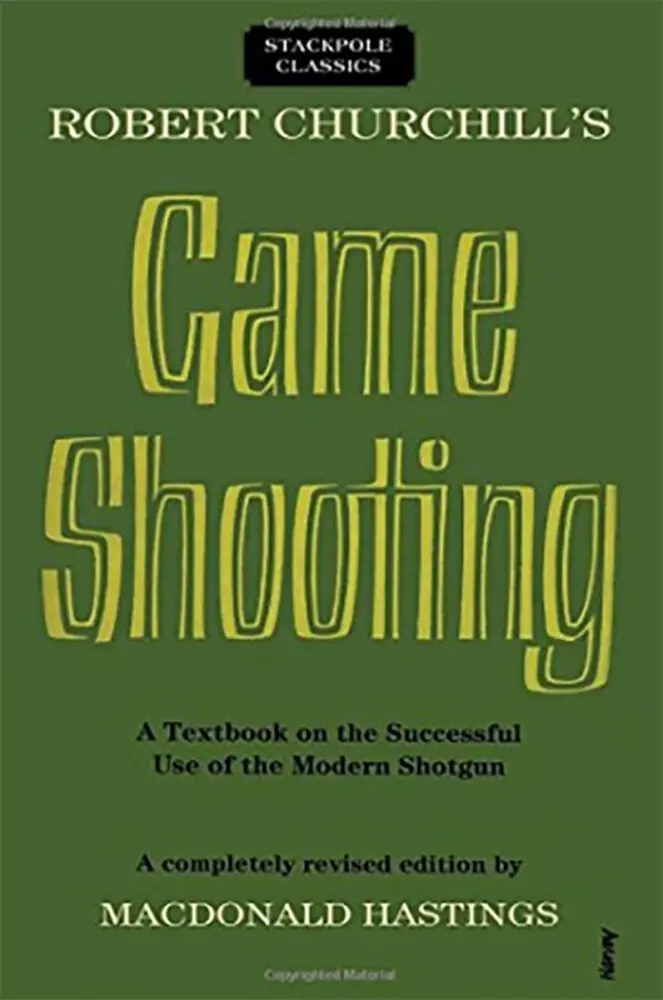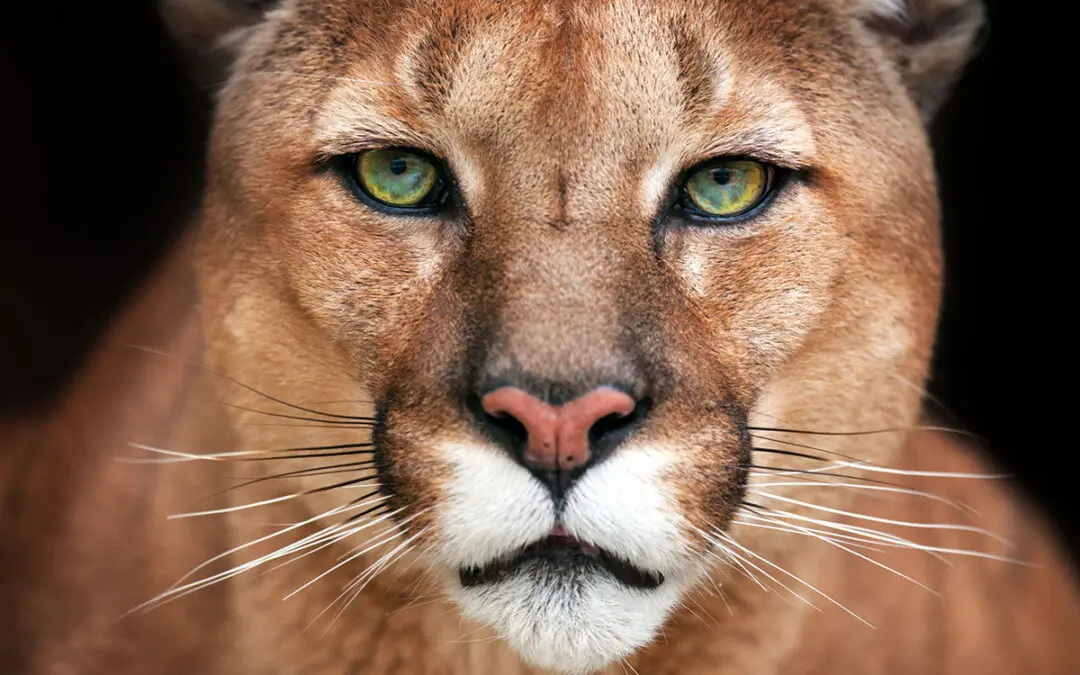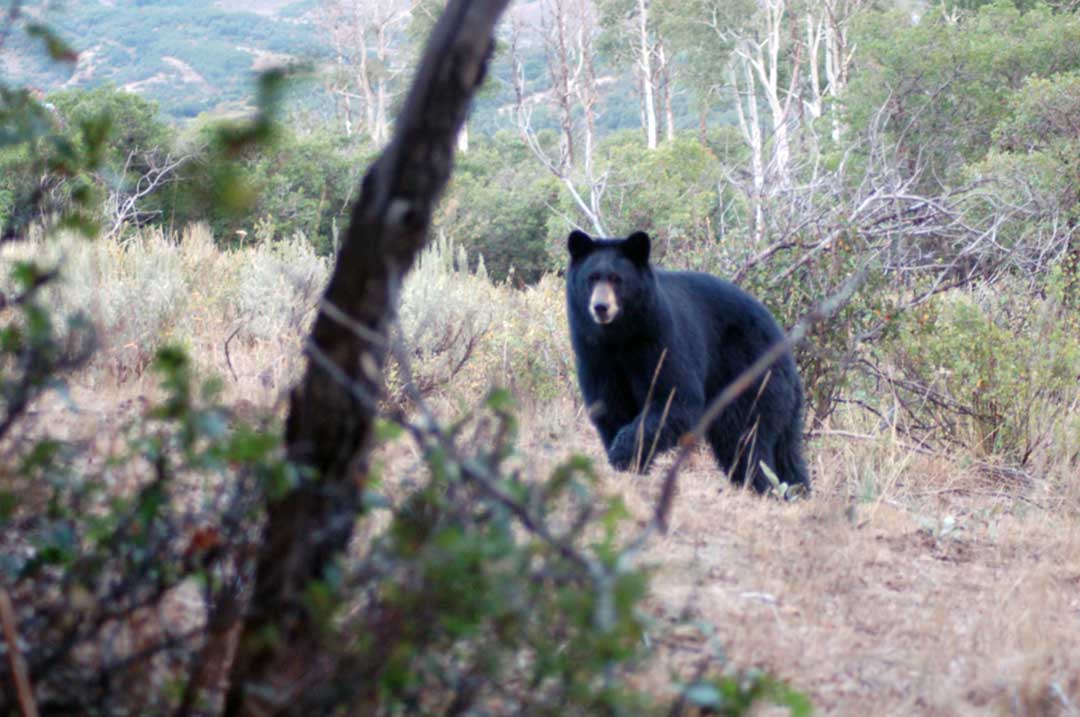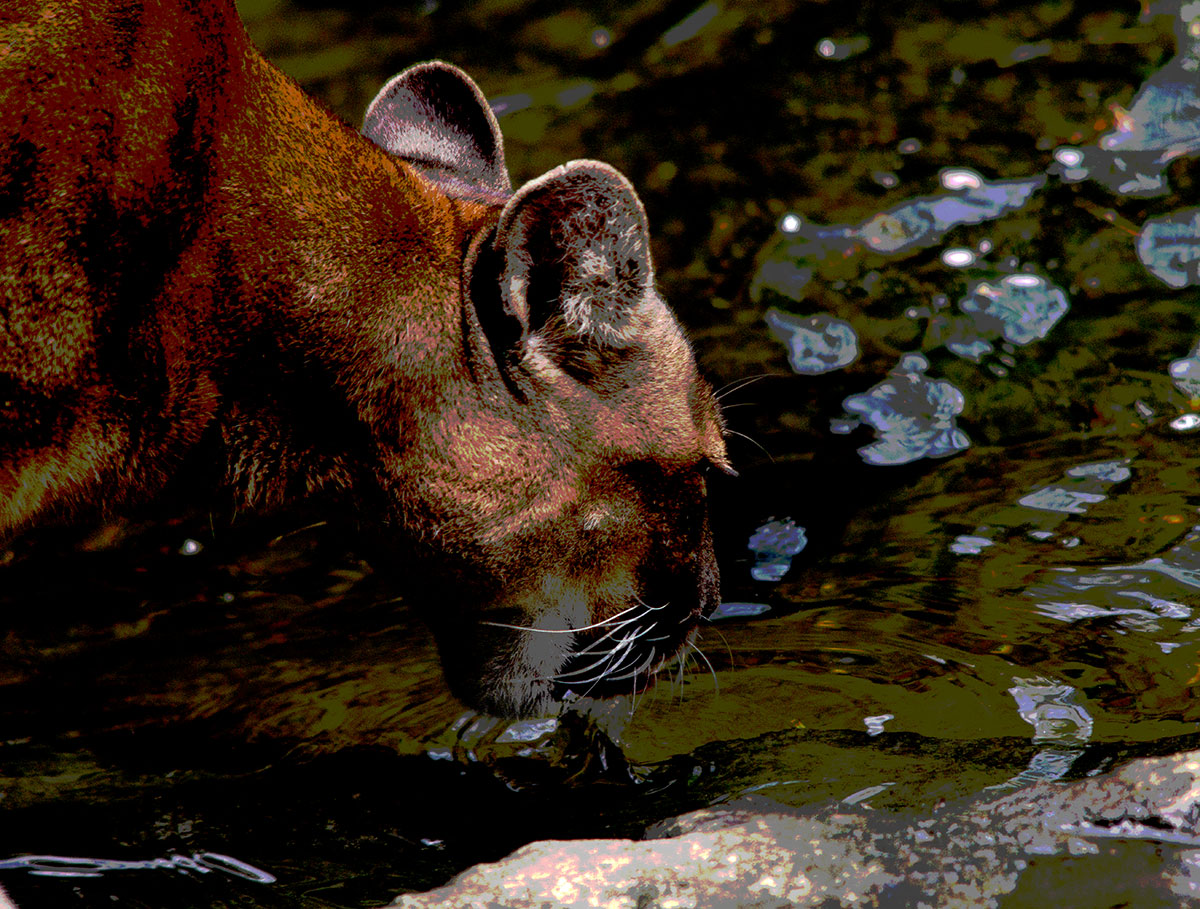Walking silently through the wet snow, I . . . reached the kill site, but another solitary hunter was already there.
I have often searched the wilderness for something that is right under my nose. On this day, I had just returned from a grueling backpack hunt deep in Colorado’s South San Juan Wilderness. Elkless again. As a field biologist working the area, I had seen numerous good bulls during August and September, but now they were in their most secretive hideaways, biding their time for just one more day — the end of rifle season. Yet, in this one day I would have an epiphany on finding late-season bulls and, more importantly, I would learn who really is the greatest hunter in these mountains. Exhausted and seeking guidance, I visited an old hunter at his cabin. While I was drinking some of his coffee, he pointed out the window to an isolated mountain.
“You could get a bull right up there if you want.” And he said it with a fairly straight face.
“So, what makes you think there are elk right here in your backyard?” I asked.
 The old man looked at me like I was crazy. “You think the only place to geta bull is in the middle of the wilderness, but when you get there, every outfitter, horse, mule and other hunter is already there waiting for you. There are less people and commotion around here than where you’ve been hunting.
The old man looked at me like I was crazy. “You think the only place to geta bull is in the middle of the wilderness, but when you get there, every outfitter, horse, mule and other hunter is already there waiting for you. There are less people and commotion around here than where you’ve been hunting.
“When the shooting starts, that mountaintop is where elk go. The mountain is public BLM land, but it’s usually untouched because it’s essentially surrounded by private ranches, giving an appearance of no access. However, a stringer of BLM land connects the mountain to a county road in the valley. Hardly anybody, yourself for example, takes time to read maps so people keep overlooking the opportunity.
“The climb is steep as a cow’s face,” he added, “then it turns into almost sheer rimrock, but that’s nothing for a kid like you. Oh, and if you get lucky, the bull will be coming out in little pieces. I won’t help, but I can supervise from the cabin.”
“Why haven’t you told me about your secret spot before?” I probed further, while looking around at some of his elk racks.
“I haven’t decided whether to trust you yet,” replied the old man. He could be an annoying old man, and I wondered why I hung around with him. Part of the reason was that he knew about undiscovered places under everybody’s nose. Of course, another reason is that I am married to his daughter.
Before daybreak the next morning, Jim dropped me off next to a dim game trail at the foot of the mountain, explaining that “we don’t want to leave a truck parked here all day because it may tip off someone about our secret spot.” I liked the our part of this.
About halfway up the mountain the trail was obliterated by a massive rockslide. I sat down to look over Jim’s topo and land status map while rethinking my route. The contour lines were literally stacked on top of each other around the entire perimeter of the mountain’s rim. The steep mountain face was now beyond Jim’s precipitous “cow’s face.”
Finding a small gap through the rim rock, I picked my way around boulders and ledges, crawling on hands and knees through thick oak brush or using the brush in other places for handholds to pull myself up.
Just below the rim, I gathered myself and slowly eased over the top. It was a different world: almost level terrain, with stands of ponderosa pine-Douglas fir, aspen and oak thickets with grassy openings. Deer tracks were everywhere. And, lingering in the damp, dark timber was that musky but mesmerizing scent of elk.
I was still-hunting slowly into the breeze when two noisy pinyon jays landed in an adjacent tree, and studied me with their beady little eyes. But before they could announce me to the world, a bull pierced the air with a high-pitched bugle! Then another bull answered with a deep, heavy bugle and grunting. Bulls bugling in broad daylight, on public land and during rifle season — what a great dream! But it was no dream. They were just doing what elk do in the fall when humans aren’t changing their plans.
Although trophy bulls can make high-pitched bugles, my money today was on the bull with the deep, heavy voice, and I started to stalk toward him. These are the moments I love dearly — awareness level high and perfectly clear, there are no worries or troublesome thoughts; I am focused only on this beautiful moment of the hunt.
Spending much more time standing than moving, I spotted a cow feeding, then more cows and calves. I froze behind a large pine and waited. The glinting of sun off antlers immediately drew my attention. The bruising herd bull was as good as I’d ever seen, but he was walking slowly in thick oak brush that eliminated any chance of a shot. Then he stopped and bedded down, fading into the dense brush.
And so began our waiting contest. The wind was light and I was comfortable, yet I still grew anxious. I thought about my elk bugle left at home, then I fidgeted with the cow call around my neck.
Suddenly, I heard an enormous crash in the herd bull’s direction. Massive antlers flashed, then he was gone. Almost simultaneously a smaller, satellite bull appeared in an opening in front of me. The big boy must have sensed something amiss and disappeared, unknowingly leaving his pesky antagonist in the line of fire. With only hours remaining in the season, and hoping to return with some winter elk meat, I centered the crosshairs behind the bull’s shoulder and squeezed the trigger of my .30-06. After following a short blood trail, I found him piled up under a ponderosa pine amid some truck-size boulders — a raghorn with a broken brow tine on one side.
I took my folding saw, knife and sharpener out of my daypack and started work. Several backbreaking hours later I had three quarters hanging in a tree. Worn out, I left the last forequarter on the ground with a large branch under it. It had smelled like snow all afternoon and now large snowflakes were falling. It was very dark when I reached the bottom of the mountain and found an international truck with an old man inside wrapped in a blanket and pretending to be asleep.
After tormenting me awhile, he unlocked the doors and let me in, and soon I was excitedly reliving my hunt story that had been playing incessantly through my mind. At the cabin, Jim grumbled something about forgetting to give the dogs the leftover stew as he handed me a warm bowl of it. But I knew the old codger was loving this hunt every bit as much as I was.
Next morning, before the sun started making its way into the eastern edge of things, I again climbed the mountain, this time without my rifle. Several inches of fresh snow covered the land, but a dazzling display of brilliant stars overhead showed promise for a good day of packing. Stopping to admire the heavens, I was once again in awe of it all.
Walking silently through the wet snow, I skirted the truck-size boulders and reached the kill site, but another solitary hunter was already there. The mountain lion had spotted me first and was intensely staring at me, crouching low to the ground, with tail twitching. Dead serious, pre-attack language. It’s so close! At a dozen paces I could vividly see fresh elk blood coating its whiskers and mouth.
Then my fearful mind took control . . .
This lion is going to take me down and it’s going to hurt bad!
I wondered how much blood I could lose and still get back to the road?
Am I going to die alone on this mountain?
Stunned, confused and unarmed, I continued to stare dumbly into the big cat’s eyes while it stared at me. I took some deep breaths and my paralyzed mind cleared with the information I needed — some advice about lion behavior from a Forest Service wildlife biologist friend came flooding back to me.
I took my pack frame off and raised it over my head to make myself appear larger. The lion and I continued our standoff, he processing new information, me still processing fear. Then I started talking to the cat, then yelling loudly and aggressively, then screaming at the top of my lungs.
Suddenly the cat’s mood changed. He looked nonchalantly in the opposite direction, stood up, stretched and walked away.

I relaxed slightly at his reaction, noticing his large frame with bony ribs and shoulder blades poking through his coat. With a huge, round, muscular face creating the illusion of tiny ears, I figured he was an old tom who was having difficulty finding food. I kept watching intently as the lion took deliberate, old-man-like steps along some large boulders, then evaporated into the brush.
Still shaken, but intrigued by the kill site, I studied the blood on top of the fresh snow and how the lion had eaten the choice liver, heart and lungs. He’d chewed up part of the forequarter, which he’d moved and partially covered with pine needles, small branches and snow. Perhaps he was just finishing feeding when I chanced upon the site.
I thought briefly about packing out some meat but my intuition convinced me to just get out of there. I walked away with more than one nervous backwards glance.
Safely off the mountain, I contemplated on what I thought was the winding down career of the lion. I wondered how much longer he could make a living hunting and if this might be his last season. Of course, I knew he was never burdened with such human thoughts. He had no regrets from the past and no fear of the future. He was simply in tune with living in the present.
Later that day, I called my friend Dave, the Forest Service wildlife biologist. Would he like to take a day off and slog up and down a steep mountain carrying an elk with a lion probably watching us? I stammered and stalled for only a few seconds. Then he quickly remembered he could either be incarcerated all day in the office dealing with meetings and politics, or he could be free in the mountains.
“So what time are you picking me up?” he said.
We boned out and packed the remaining elk meat off the steep, slippery mountain the next day and with only moderate whining. Shifting my backpack on the last load, I noticed the heavy weight on my belt of a .357 Magnum revolver that I’d been carrying all day, apparently for no reason.
Today, while I am still thrilled by my lion adventure and elk hunt, I’ve reflected much on the deeper wisdom these and other magnificent wild creatures have inspired within me. Why am I so attracted to wild things? Maybe by being close to them, I can somehow know their secret. Instinctively, they seem to already know what I am still seeking.
Aldo Leopold knew his business — that undiscovered place we are searching for may be right under our nose.
 This edition of the standard textbook on its subject has been revised by Robert Churchill’s biographer. Macdonald Hastings, himself well-known in the shooting field (and other fields as well), has incorporated comments on matters which, since Churchill’s Game Shooting as first published in 1955, required further enlargement or modification. He has also brought the entire work completely up-to-date.
This edition of the standard textbook on its subject has been revised by Robert Churchill’s biographer. Macdonald Hastings, himself well-known in the shooting field (and other fields as well), has incorporated comments on matters which, since Churchill’s Game Shooting as first published in 1955, required further enlargement or modification. He has also brought the entire work completely up-to-date.
To those who are still unfamiliar with Churchill’s method of teaching game-shooting, it is important to add that this books is aimed to help not merely the experienced shot who wonders why he is missing, but also the novice handling a gun for the first time. It contains complete and always practical advice on all forms of shot-gun work for everybody. Buy Now




